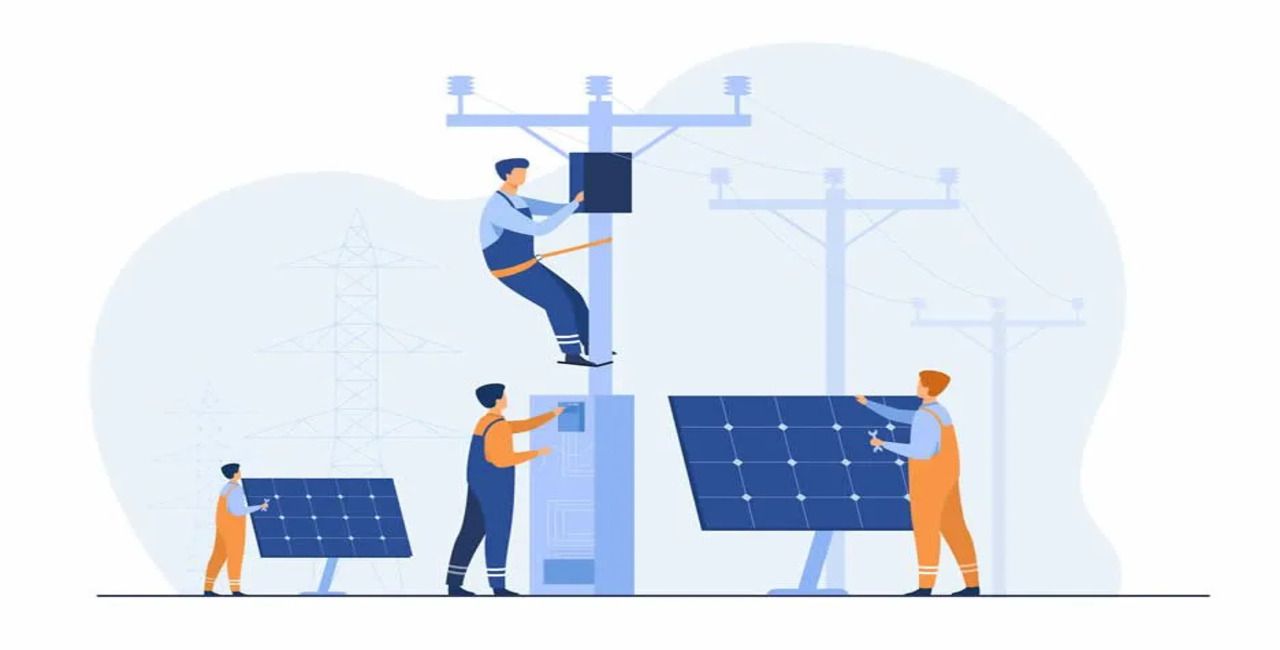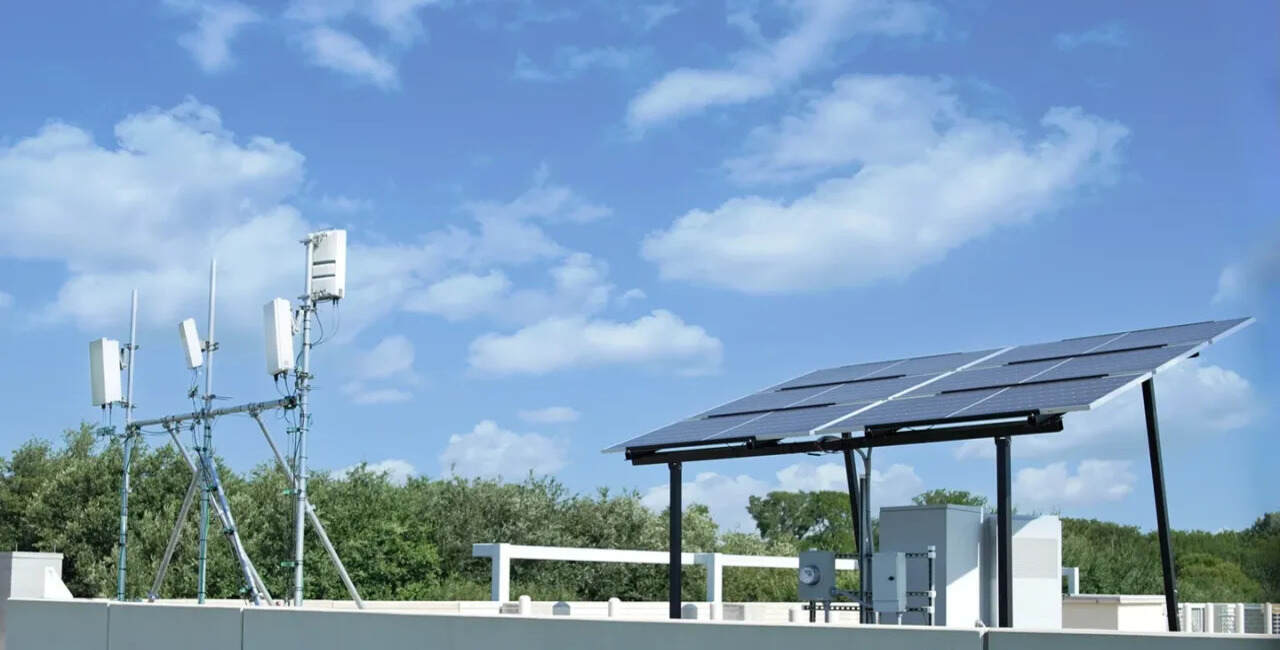Solar Energy and 5G: Synergies and Opportunities for Installers in the Digital Era

The Intersection of Solar Energy and 5G Technology
Both renewable energy and internet connection have made significant strides in the 21st century. Among these advancements, solar energy and 5G technology have become game-changers in their respective industries. The combination of solar energy with 5G gives an unparalleled potential for improving the efficiency and efficacy of the smart grid as society continues to adopt sustainable practices and intelligent solutions.
This article examines the relationship between these two technologies and how they may be used to create a more sustainable and interconnected future.
Understanding the Intersection between Digital Connectivity and Renewable Energy
Solar energy is becoming increasingly popular as a cleaner, more environmentally friendly substitute for conventional fossil fuels. Solar energy uses photovoltaic panels or concentrated solar power systems to harness the power of the sun to produce electricity. While this was happening, 5G technology, which offers faster data transfer speeds, lower latency, and more network capacity, completely changed digital communication.
The fusion of these two game-changing technologies sets the path for a win-win partnership that might completely overhaul the way energy is managed and distributed.
Integration of Solar and 5G in the Smart Grid
The smart grid represents an intelligent and dynamic electricity distribution network that employs advanced technologies to optimize power generation, distribution, and consumption. The integration of solar energy and 5G technology within the smart grid offers numerous advantages:
- Solar energy system monitoring and control are made possible in real time by 5G's low latency and high data transfer capabilities. To improve grid management and load balancing, this enables utilities and grid operators to acquire exact data on solar energy output, consumption patterns, and equipment performance.
- Solar panels and other renewable energy sources may be more precisely integrated into the grid by utilizing a 5G connection. This increases the system's overall efficiency and guarantees that the energy from different sources is used as efficiently as possible, hence minimizing waste.
- The production of solar energy is weather-dependent. More precise energy forecasting is made possible by integrating solar arrays with 5G-enabled weather monitoring devices. Better planning and decision-making in terms of energy distribution and demand management are made possible by this data-driven approach.
- The smart grid can quickly adapt to changes in energy demand thanks to 5G-enabled connectivity. Extrasolar power can be used during peak hours to power charging stations or stored in batteries for later use. This demand-response capacity aids in grid balancing and prevents overloading or blackouts.
- The fast connectivity of 5G enables users to actively take part in energy management. With 5G integration, smart meters provide users with real-time insights into energy consumption trends, enabling them to make educated decisions and modify their electricity usage for cost savings and sustainability.
An important turning point in the development of the smart grid is the union of solar energy with 5G technology. Likely, the combination of these two technologies will completely transform how energy is produced, distributed, and used.
This combination may provide a power system that is more dependable, effective, and sustainable by improving real-time monitoring, energy forecasting, and demand response capabilities. The union of solar energy with 5G technology is a brilliant light of promise for a greener world as civilization evolves toward a cleaner and more connected future.
Advantages of 5G for Solar Installations

Solar energy is not an exception to how numerous businesses have been transformed by the introduction of 5G technology. To improve solar system monitoring, management, and overall operational efficiency, 5G has opened up new opportunities with its ultra-fast data transfer capabilities and low latency.
This section will discuss the benefits of 5G for solar systems and how this cutting-edge technology is changing the world of renewable energy.
- Real-time Monitoring and Control:
The capacity to monitor and manage solar systems in real time is one of 5G's primary benefits for solar installations. Traditional monitoring methods may experience a delay in data transmission and processing, which might cause potential problems to go unreported for a long period.
Solar operators can now track the performance of specific panels, inverters, and other components in real-time thanks to 5G's reduced latency, which means that data is delivered virtually instantly. This proactive strategy enables quick detection of any errors or inefficiencies, resulting in prompt corrections and increased system dependability.
2. Enhanced Data Analytics:
Processing and analyzing the enormous volume of data produced by solar systems may be quite difficult. The quick flow of data to cloud-based analytics tools made possible by 5G technology makes this process simpler. This gives solar operators and energy providers a greater understanding of system performance, patterns of energy output, and room for development.
Operators can optimize energy output, anticipate maintenance requirements, and fine-tune solar operations for optimal efficiency with the capacity to swiftly analyze huge datasets.
3. Increased Energy Efficiency:
Solar systems can be connected with smart grids more successfully by utilizing 5G's capabilities. Solar systems can easily adjust to variations in energy demand and supply thanks to real-time data transfer. Solar arrays, for instance, can react quickly to give more electricity to the grid during times of high energy demand, lowering dependency on fossil fuels and improving overall energy efficiency. Solar energy is efficiently harvested thanks to the dynamic reaction made possible by 5G, creating a more steady and dependable energy source.
4. Remote Asset Management:
Solar systems in hard-to-reach or isolated areas might be difficult to properly operate and maintain. But with the help of 5G's remote asset management capabilities, it is now feasible to monitor and operate solar systems even in faraway locations. Without having to be physically present on-site, technicians and operators may access real-time data and make modifications, cutting operational expenses and ensuring that solar projects in remote areas perform to their full potential.
5. Improved Safety and Security:
Solar systems are more secure because of 5G technology's quicker and more dependable connection routes. With the use of 5G networks, sophisticated security systems, including surveillance cameras and intrusion detection systems, can deliver immediate warnings and real-time monitoring. Solar systems are safeguarded from theft, vandalism, and other security hazards because of this quick response to security lapses.
The 5G technology integration with solar systems benefits the renewable energy industry in several ways. 5G is improving solar operations by providing real-time monitoring and control, strengthening data analytics, boosting energy efficiency, enabling remote asset management, and promoting safety and security. Solar installations are poised to become increasingly more effective, dependable, and crucial to the global energy grid as 5G networks continue to develop and improve.
Enhancing Solar Data Collection and Analysis with 5G
For a sustainable and green future, solar energy must be integrated into our electricity infrastructure. Real-time data monitoring and precise forecasting are crucial for maximizing the effectiveness and utilization of solar electricity. Data transmission has been revolutionized with the arrival of 5G technology, which provides unmatched connection and low-latency capabilities.
This section explains how 5G networks enhance solar forecasts and performance by enabling real-time monitoring and analysis of solar energy data.
Real-time Solar Energy Data Monitoring and Analysis with 5G
In the past, sensors' sporadic updates were used to collect data on solar energy, which had poor efficiency and responsiveness. High data transfer rates and low latency offered by 5G networks lay the groundwork for flawless real-time monitoring of solar energy systems. This development makes it possible for solar panels, weather sensors, and other pertinent equipment to continuously send data to centralized data centers.
With 5G, solar systems can instantly communicate vital data, enabling operators to track performance, spot anomalies, and quickly address problems. This quick data transmission speeds up issue finding, lowers downtime, and increases system dependability overall. Real-time monitoring also makes it easier to see possible areas for improvement, giving operators the chance to optimize their systems for increased effectiveness and performance.
Optimizing Solar Forecasting and Performance through 5G Connectivity
For grid managers to efficiently balance power supply and demand, accurate solar forecasting is essential. Several ways that 5G connection improves solar forecasts include:
a. Data from numerous sources, like satellite imaging, meteorological databases, and historical solar production data, may now be integrated thanks to 5G technology. This plethora of data aids forecasters in developing accurate models that more accurately estimate solar energy output.
b. Edge computing includes processing data closer to the source, which is made possible by 5G networks. Solar forecasting models can analyze real-time data quickly by running calculations at the network's edge, enabling dynamic revisions to forecasts based on the weather and other factors right now.
c. The installation of cutting-edge machine learning algorithms and AI applications is supported by 5G's low latency and high bandwidth capabilities. These tools can improve forecasting models over time and continually learn from data trends to produce more precise forecasts.
d. Even in massive solar farms, 5G enables remote management and control of solar assets. Based on current weather information, operators can modify the tilt angles, orientation, or other characteristics of solar panels to better optimize energy production.
The use of 5G technology expands the possibilities for data gathering, monitoring, and forecasting in the solar energy industry. Solar systems may give real-time data by utilizing the capabilities of 5G networks, allowing operators to maximize system performance, quickly spot problems, and optimize solar energy output. The convergence of solar energy and telecoms offers a cleaner and more sustainable future as 5G technology develops.

